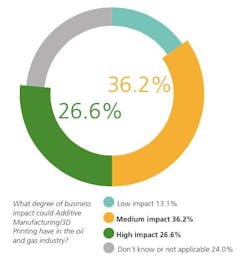3D Printing for Safety Critical Industries
Two of the hottest industrial technologies of the past decade have been the focus of significant standardization/certification efforts recently. As noted in my blog last week, AVnu Alliance’s efforts to deliver certification for high-speed, deterministic communication over standard Ethernet is getting major support from industry players such as Belden, GE and National Instruments. The other hot industrial technology under the standardization/certification spotlight is 3D printing, aka additive manufacturing.
Lloyd’s Register Energy has launched a joint industry project (JIP) around additive manufacturing, inviting companies from across the world to “tackle the current and future issues faced by manufacturers supplying the energy industry.” According to Lloyd’s Register, this new initiative will help to “develop standards and deliver safety and consistency in additive manufacturing.”
Driving the interest of Lloyd’s Register in additive manufacturing is the technology’s potential to affect global supply chains. Looking into the additive manufacturing sector’s projected growth rate of 390 percent over the next seven years, Lloyd's Register Energy research suggests that the technology will have a major impact in the oil and gas industry within the next 5 years.
Currently, additive manufacturing is being held back from widespread adoption in safety critical, asset intensive industries such as oil and gas because there is currently no standardized way of proving to manufacturers and regulators that printed products are safe, says Claus Myllerup, senior vice president of technology for Lloyd’s Register Energy.
The safe and sustainable use of powders used in the manufacturing process is also a concern from an environmental and health perspective, according to Lloyd’s Register Energy.
Claire Ruggiero, Lloyd’s Register Energy’s vice president for technical inspection services said: “The issues faced by manufacturers using additive manufacturing can be overcome through collaboration and working together. Pulling together key parties from material and machine suppliers, manufacturers, end users and research organizations, we can collectively consider the risks and control measures from different perspectives ensuring that all aspects are covered. We are confident this JIP will begin to help shape and guide ‘best practice’ standards in additive manufacturing.”
For more information, visit: www.lr.org/additive-manufacturing

